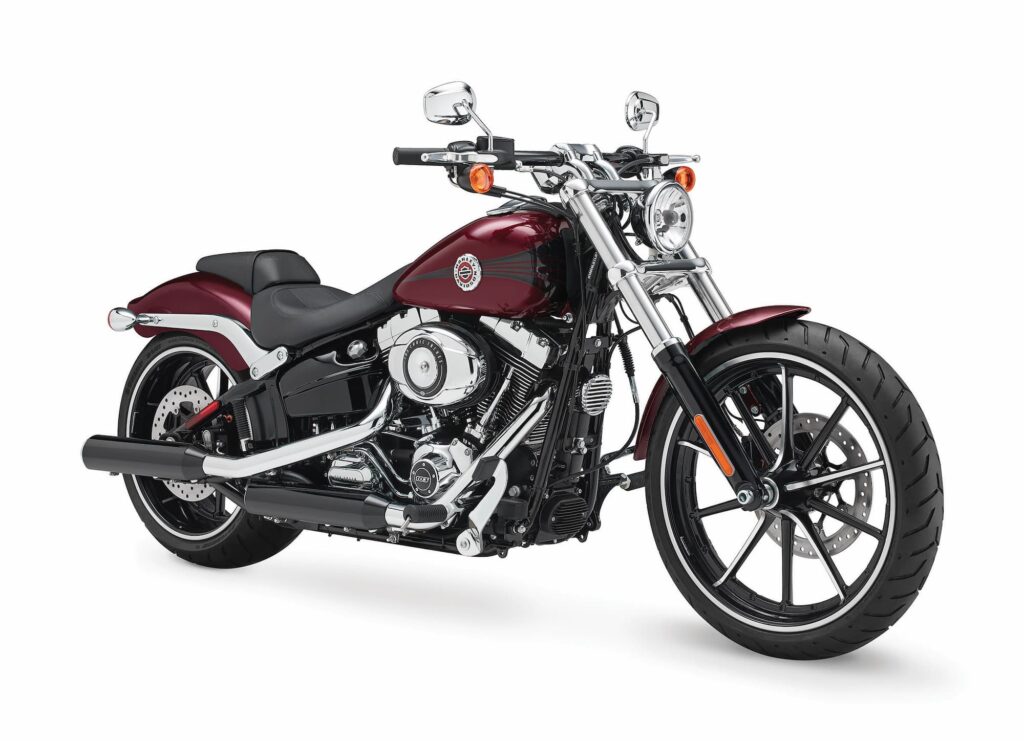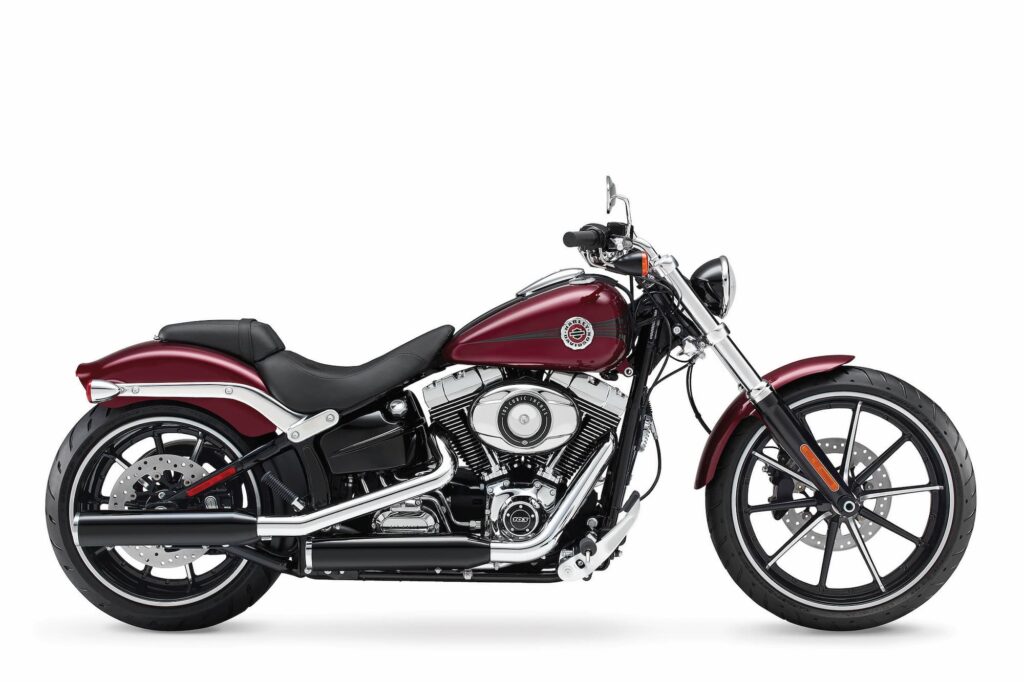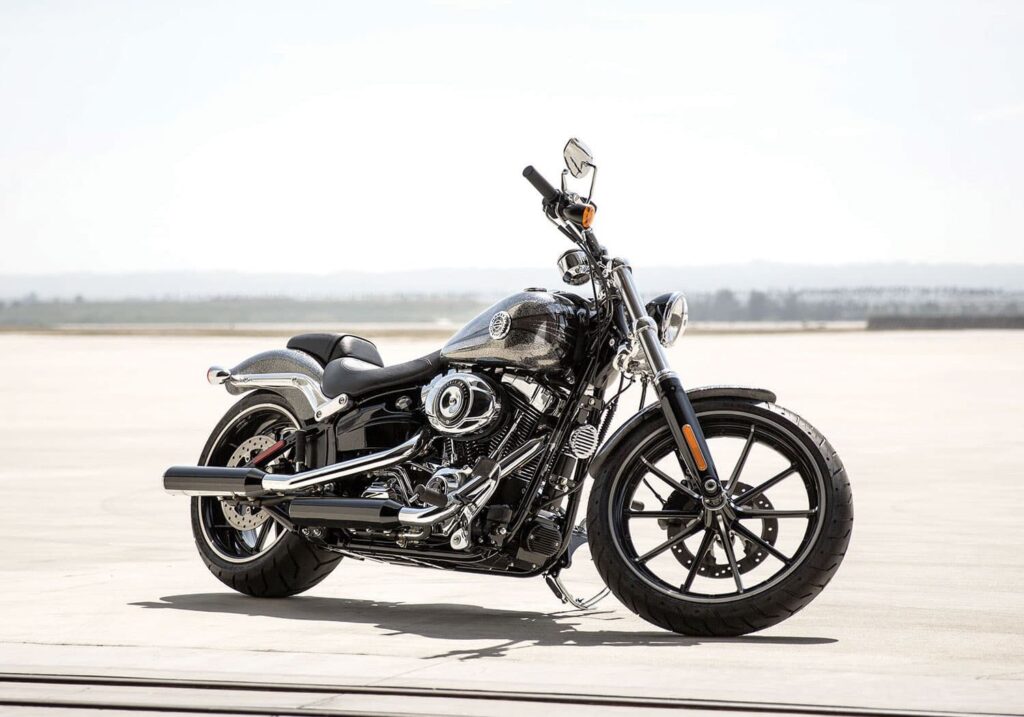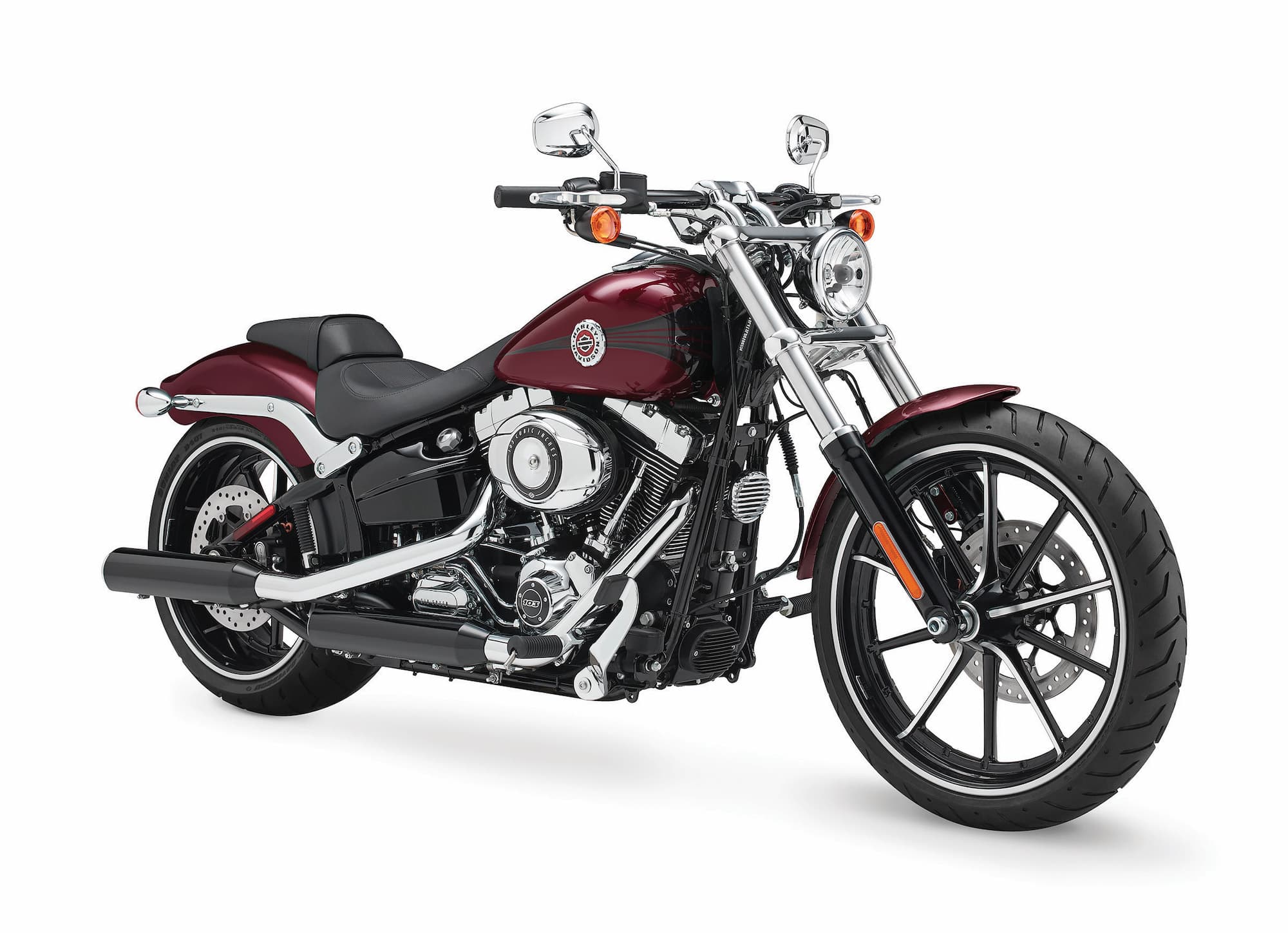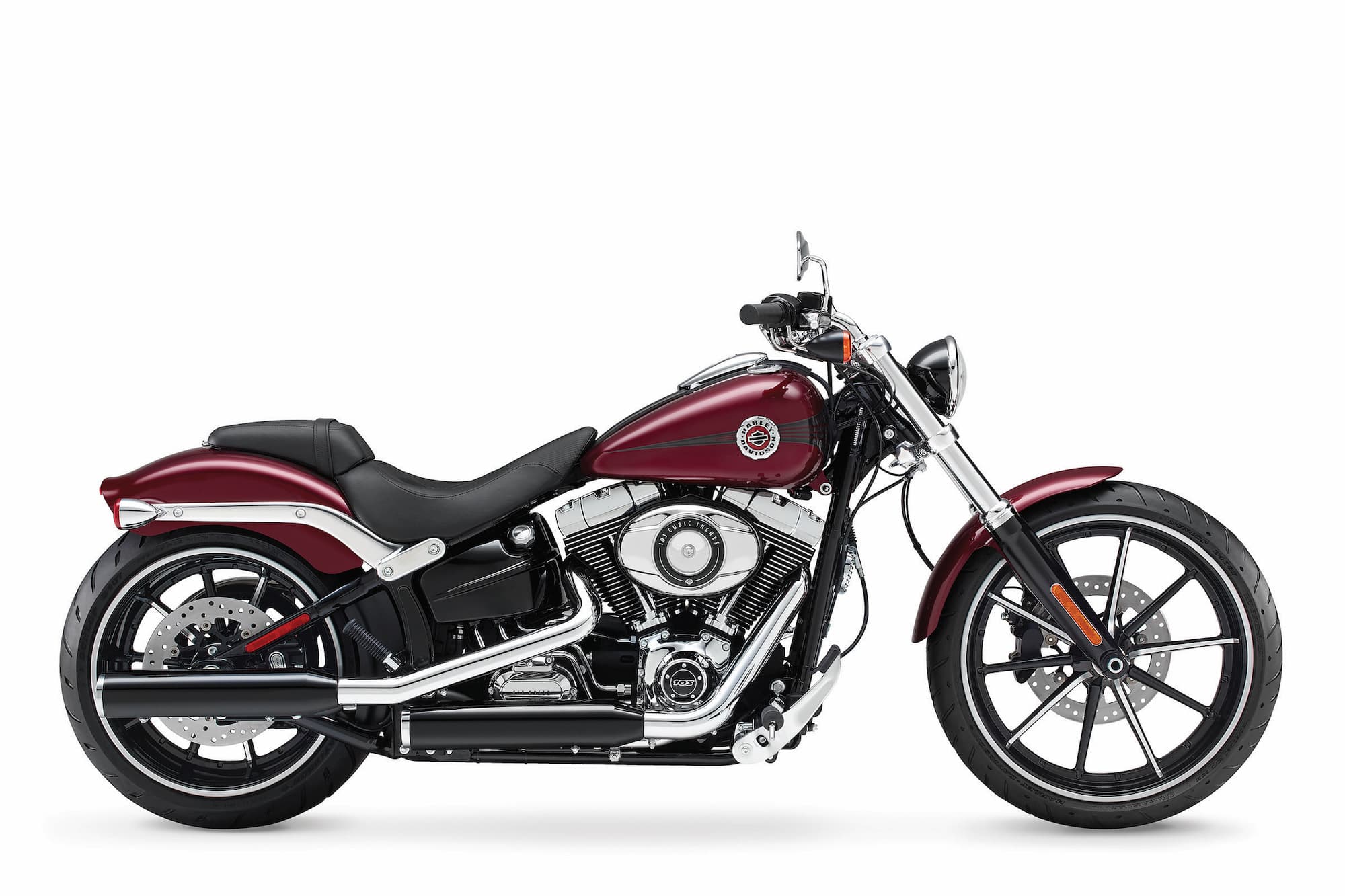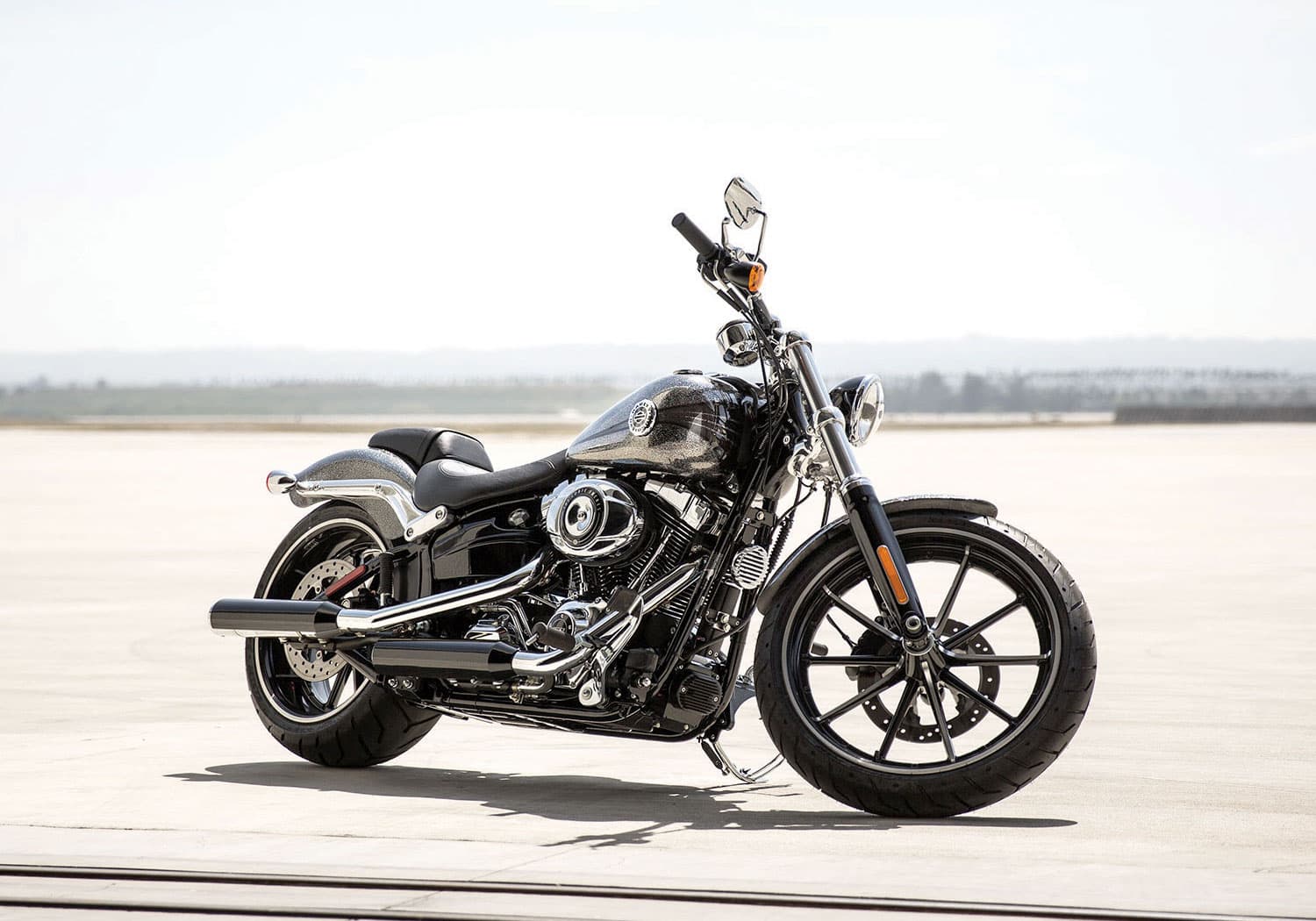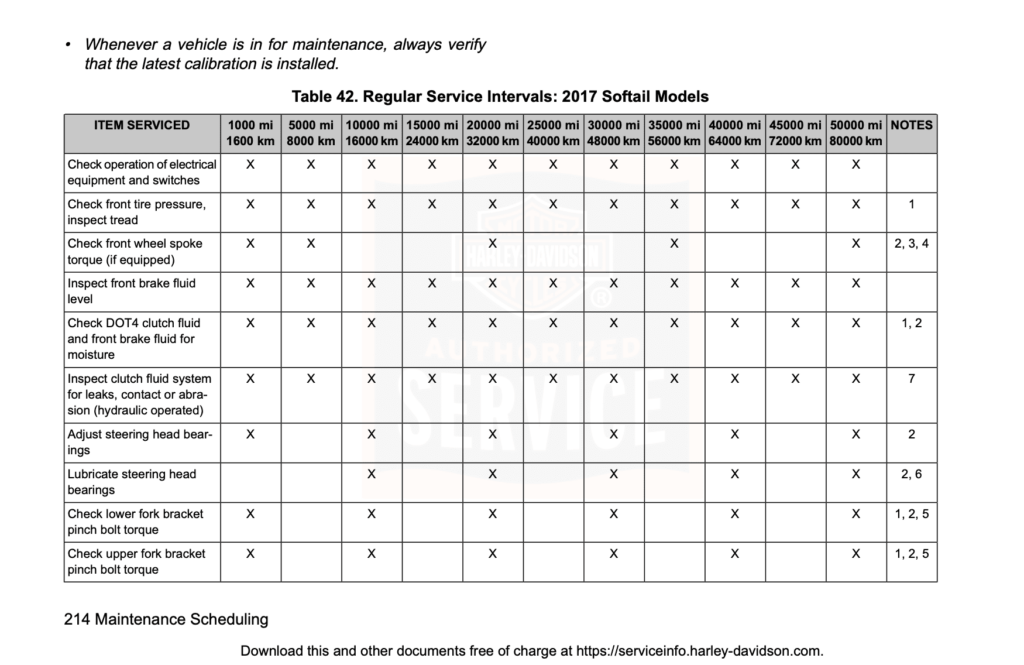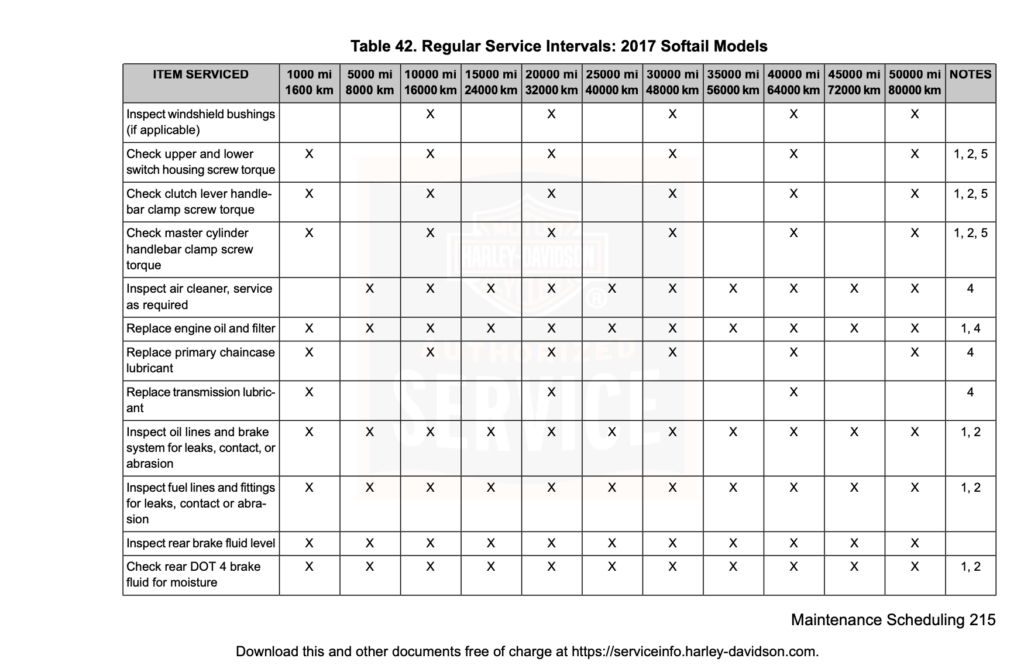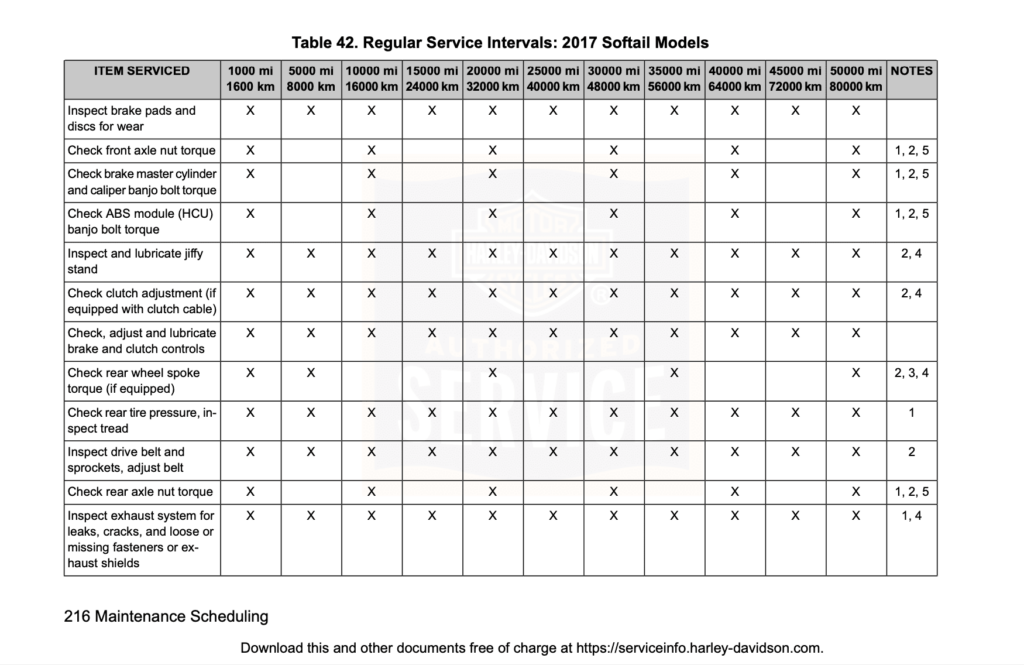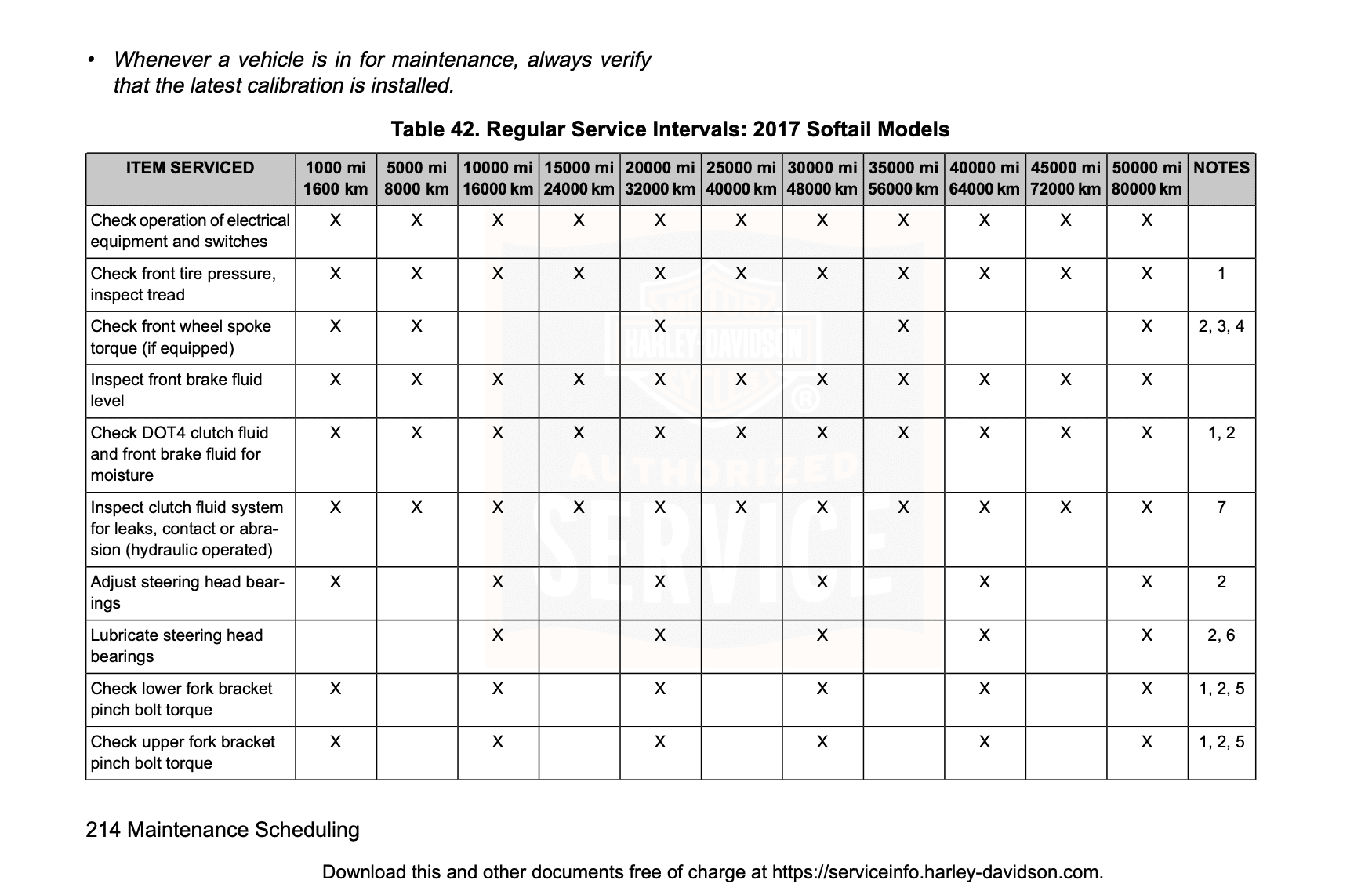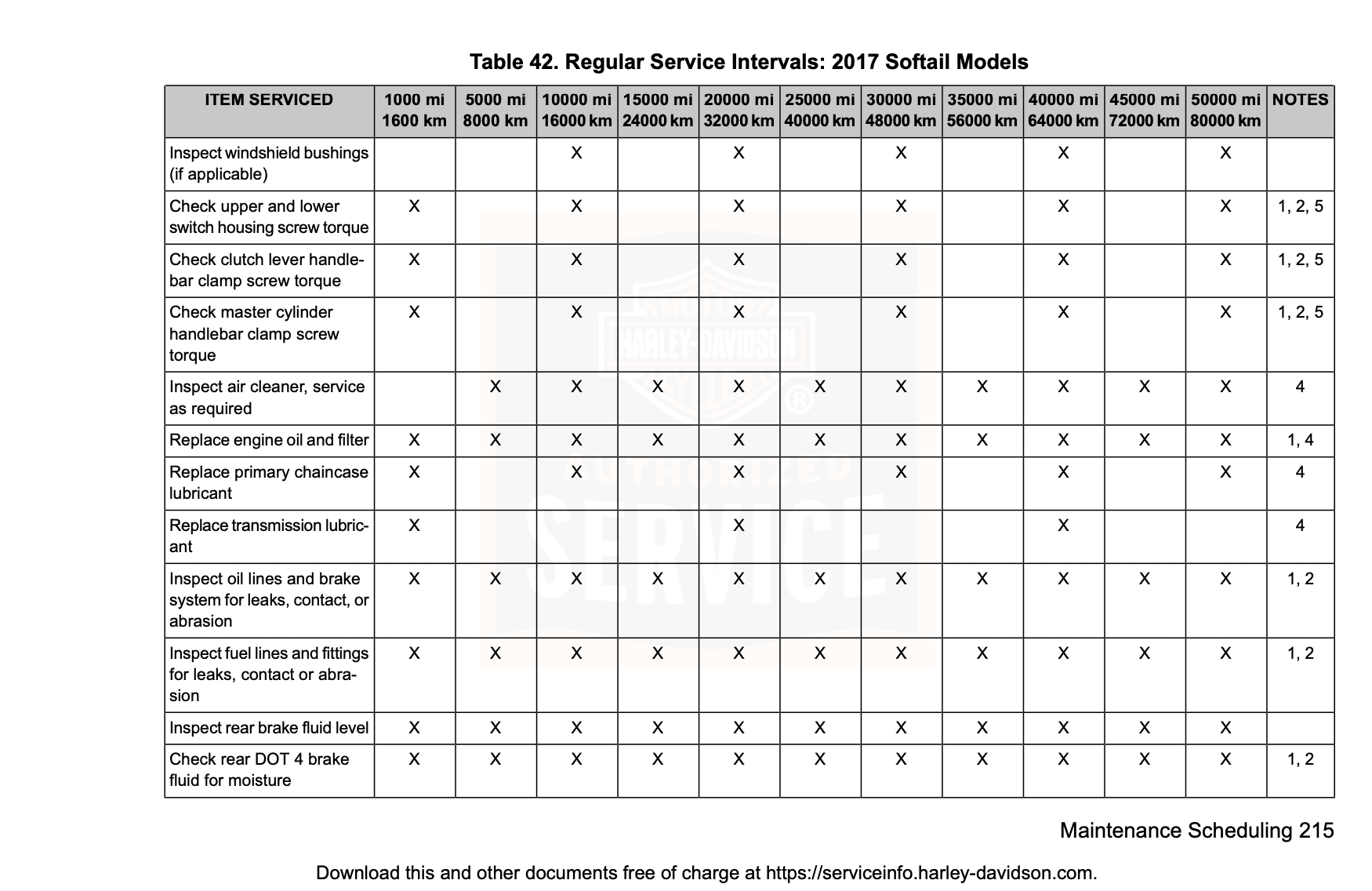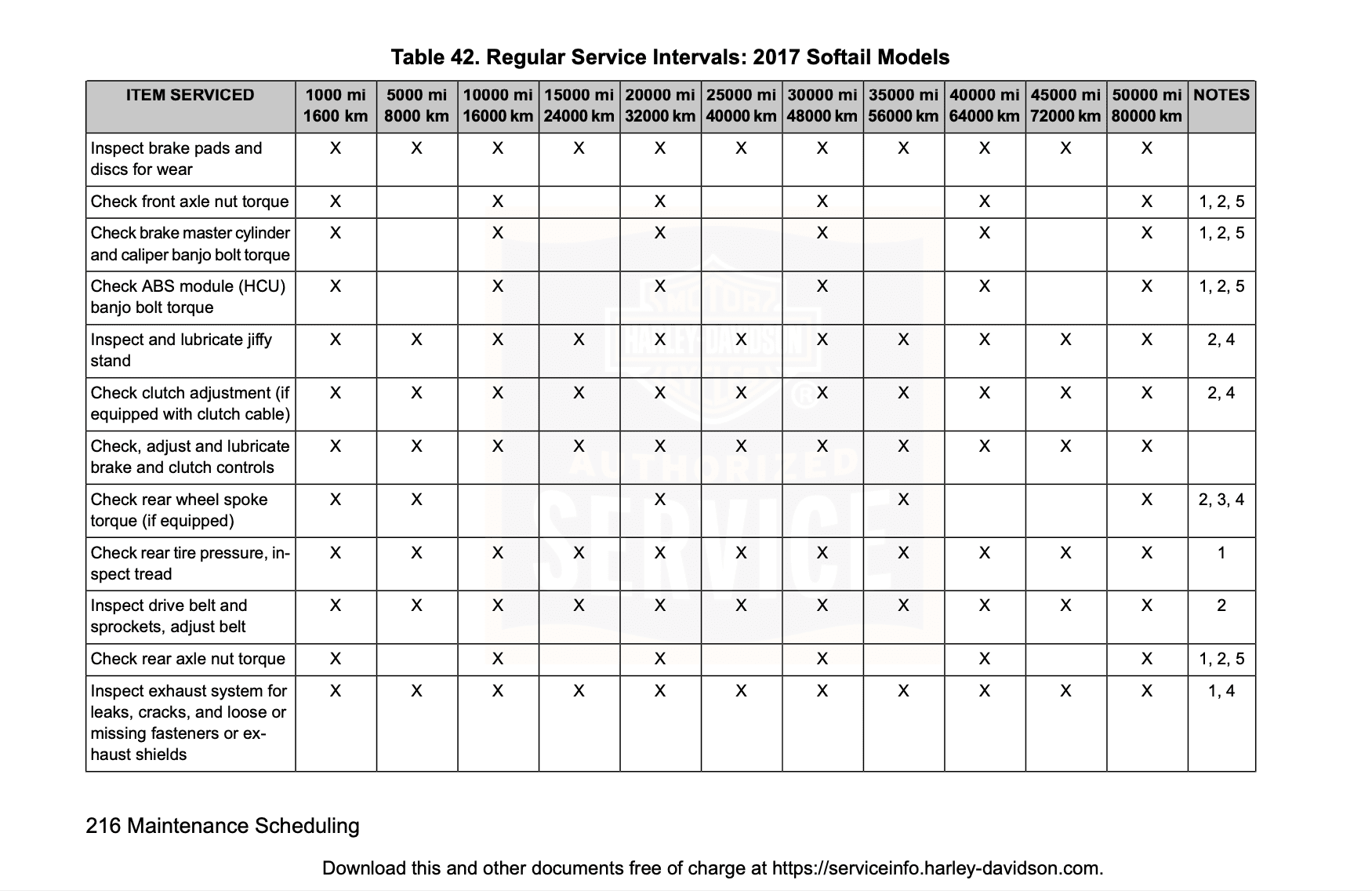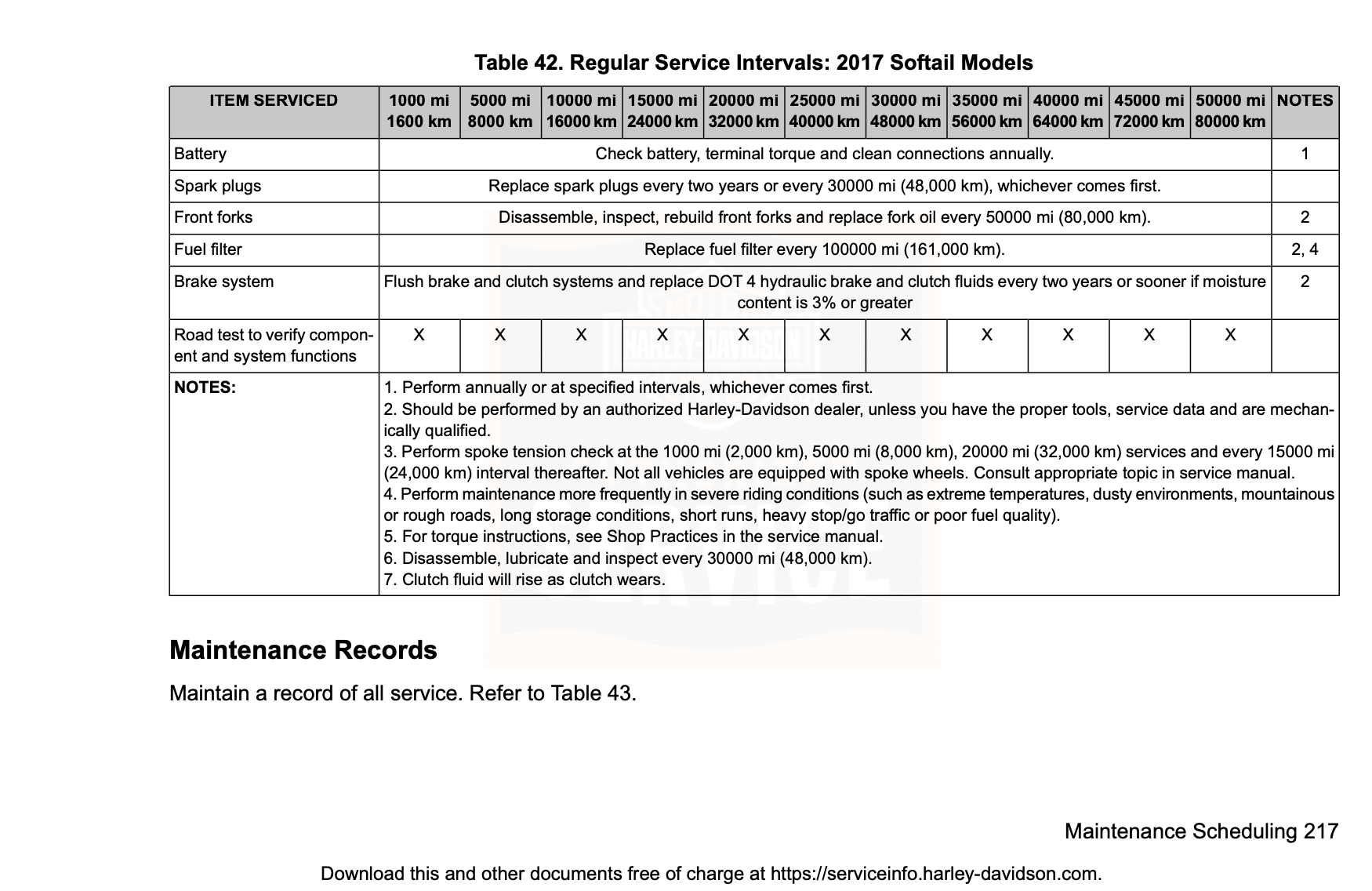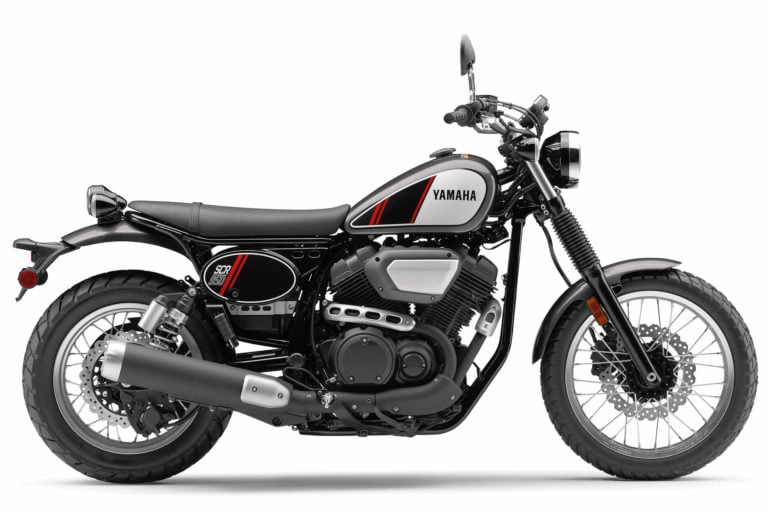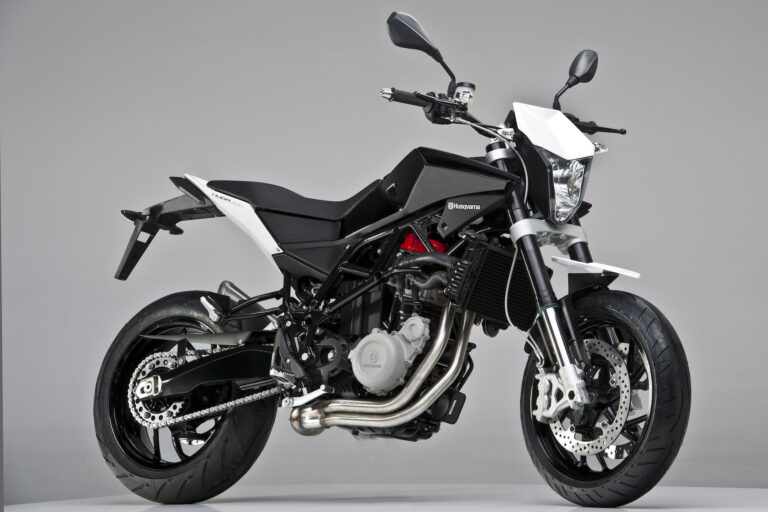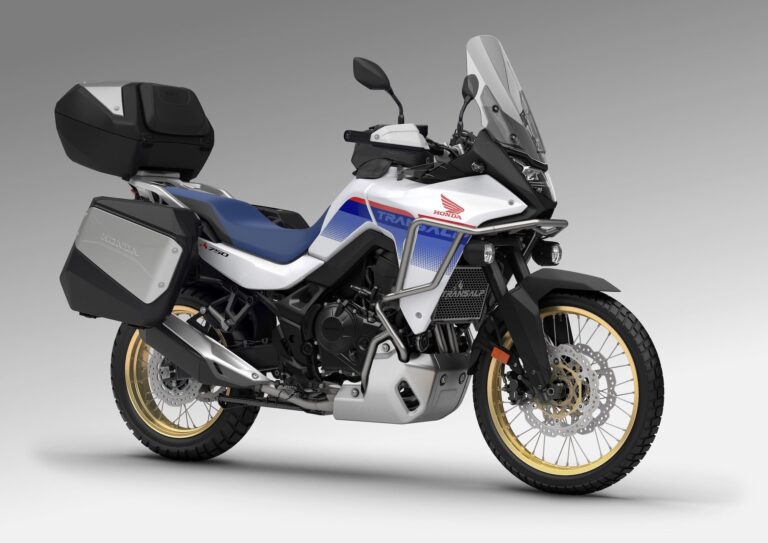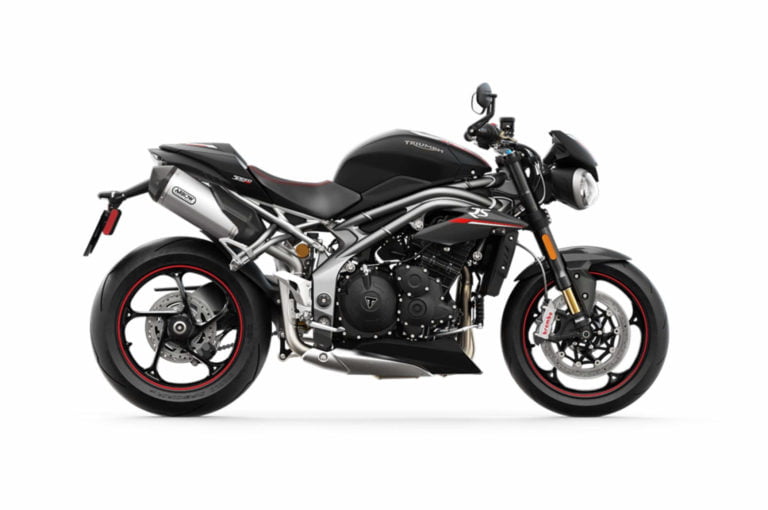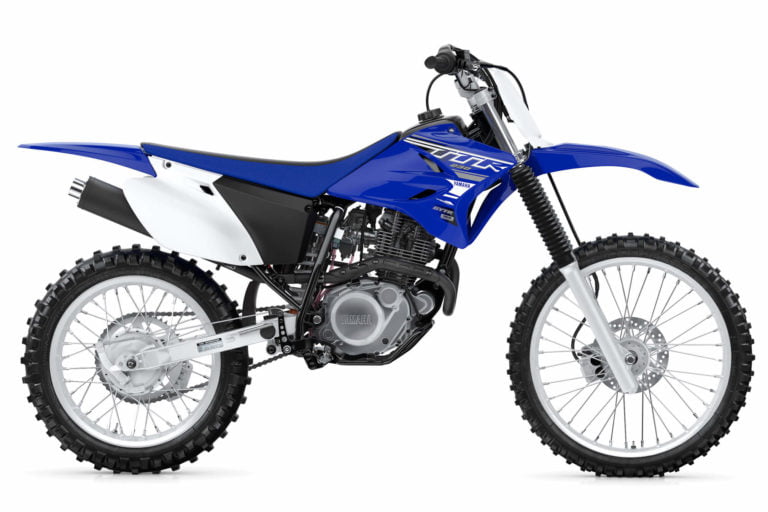Harley-Davidson Breakout Twin Cam 103B (FXSB, 2013-2017)
This is the maintenance schedule, service interviews, and maintenance / service guide for the Harley-Davidson Breakout made from 2013-2017 with the Twin Cam 103B motor, code name FXSB.
The Harley-Davidson Breakout Twin Cam 103B is based on the Softail chassis at the time. The motor is the 1690cc counter-balanced Twin Cam 103 motor with automatic compression release. It makes peak torque of 95.2 lb-ft at 3000 rpm (in its release spec, though it was updated in 2015), and puts power down through a 6-speed “Cruise Drive” transmission and belt.
From mid 2017 (for the 2018 model year in most markets), Harley-Davidson replaced the FXSB Breakout with the FXBR and FXBRS Breakouts, based on the Milwaukee-Eight motor.
Here are all the versions of the Harley-Davidson Breakout that have been released:
- Harley-Davidson FXSB Breakout (Twin Cam 103B), 2013-2017
- Harley-Davidson FXBR Breakout (Milwaukee-Eight 107), 2017-2019
- Harley-Davidson FXBRS Breakout (Milwaukee-Eight 114), 2018-2022
- Harley-Davidson FXBR Breakout (Milwaukee-Eight 117), 2023+
This site has links from which we earn a commission (which unfortunately nobody can save, not even us). If you appreciate this research work, then please use those links. Thanks.
Service Intervals
Like other motorcycles with the Twin Cam 103 motor, the Harley-Davidson Breakout (FXSB) has 5000 mile / 8000 km oil change service intervals.
At every service, change the oil filter, inspect the air filter (cleaning it / servicing it as required), and do a host of other checks (see down, the service checklist).
You also have to periodically change the primary chaincase lubricant and transmission lubricant.
Since the Harley-Davidson Breakout has a belt drive, there’s minimum maintenance to be done there – though you do have to check and adjust the tension.
Finally, the Breakout Twin Cam only has a clutch cable, as most Softail models didn’t receive the Project Rushmore updates that the Touring line did. So you just have to maintain the clutch cable, and replace the brake fluid periodically.
Maintenance Schedule
Below is the maintenance schedule for the Harley-Davidson Breakout Twin Cam 103B (the FXSB). It’s the same maintenance schedule as for other Softail motorcycles of the period with a clutch cable.
For convenience, we’ve ordered it so that the most important elements (fluid changes and major checks) are at the top, and we’ve separated the items to inspect (e.g. condition of cables and moving parts) into a separate “inspection checklist”.
Notes
- The maintenance schedule is cropped at 30000 miles / 48000 km. Keep repeating it after this point in the pattern shown.
- Some items (starting with the oil change) have a time-based or distance-based service interval. Use the earlier of the two.
| mi x 1000 | 5 | 10 | 15 | 20 | 25 | 30 | |
|---|---|---|---|---|---|---|---|
| km x 1000 | 8 | 16 | 24 | 32 | 40 | 48 | Every |
| Inspection checklist (see below) – Perform | ✓ | ✓ | ✓ | ✓ | ✓ | ✓ | Year (some items) |
| Engine oil – Replace (Castrol V-Twin 20W50) | ✓ | ✓ | ✓ | ✓ | ✓ | ✓ | Year |
| Oil filter – Replace | ✓ | ✓ | ✓ | ✓ | ✓ | ✓ | |
| Primary chaincase lubricant – Replace (Castrol V-Twin 20W50) | ✓ | ✓ | ✓ | More often if riding in severe conditions. | |||
| Transmission lubricant (Castrol V-Twin 20W50) | ✓ | More often if riding in severe conditions. | |||||
| Air cleaner – Inspect / Clean / Replace as required | ✓ | ✓ | ✓ | ✓ | ✓ | ✓ | More often if riding in severe conditions. |
| Spark plugs – Replace H-D 6R12 or NGK DCPR7E Tighten to 12-18 lb-ft / 16-24 Nm | ✓ | 2 years | |||||
| (Spoked rims) Spoke tightness, front and rear – Check / Tighten | ✓ | ✓ | 15000 mi. More often if riding in severe conditions. | ||||
| Switch housing screw torque (upper and lower) – check | ✓ | ✓ | ✓ | Year | |||
| Clutch lever handlebar clamp screw torque – Check / Tighten | ✓ | ✓ | ✓ | Year | |||
| Master cylinder clamp screw torque – Check / Tighten | ✓ | ✓ | ✓ | Year | |||
| Brake caliper and ABS banjo bolt torque – Check / Tighten | ✓ | ✓ | ✓ | Year | |||
| Fork brackets (upper and lower) pinch bolt torque – Check / Tighten | ✓ | ✓ | ✓ | Year | |||
| Steering head bearings – Adjust / Lubricate | ✓ | ✓ | ✓ | ||||
| Windshield bushings (if fitted) – Inspect | ✓ | ✓ | ✓ | ||||
| Brake fluid – Replace (use DOT 4 fluid) | 2 years | ||||||
| Front and rear axle nut torque – Tighten | ✓ | ✓ | ✓ | Year | |||
| 12V battery – Check battery, terminal torque, and clean connections. Lubricate with electrical contact lubricant | Year | ||||||
| Front forks – Rebuild | 50000 mi / 80000 km | ||||||
| Fuel filter – Replace | 100000 mi ( 161000 km) |
Inspection Checklist
Below is the standard service checklist for the Harley-Davidson Breakout Twin Cam. Do this according to the schedule above.
| Harley-Davidson Softail Twin Cam 103 (Air Cooled, Cable Clutch) Inspection Checklist |
|---|
| Oil and brake lines – Inspect for leaks, contact, abrasion |
| Fuel lines and fittings – Inspect for leaks, contact, abrasion |
| Drive belt and sprockets – Inspect condition |
| Drive belt – Check / Adjust tension See notes below on checking drive belt tension |
| Electrical equipment and switches – Check operation |
| Tire pressure and tread (front and rear) – Check Inspect / Change rear sprocket isolator when changing tire |
| Brake pads and discs – Check for wear, replace as necessary |
| Brake and clutch controls – Check / Adjust / Lubricate |
| Brake fluid level (front and rear) – Inspect (between levels in sight glass) Note: fluid level drops as pads wear |
| Brake fluid moisture content (front and rear) – Check Replace if over 3% |
| Clutch cable – adjust and check for contact or abrasion. Lubricate cable. Use Harley-Davidson lubricant |
| Suspension – Check smooth operation, no leaks |
| Jiffy stand – Inspect / Lubricate |
| Exhaust system, fasteners, and shields – Inspect for leaks, cracks, loose / missing fasteners |
| Component and system function – Road test |
Belt Maintenance
To check the belt tension on your FXSB Breakout, follow the procedure below.
You need a belt tension tool and a ruler.
- Put the motorcycle in neutral on its stand, with the rear wheel on the ground.
- Push up on the middle of the bottom half of the belt until the belt tension gauge registers 10 lb (4.5 kg) of pressure.
- Use the ruler to measure belt tension.
Target belt tension for the Harley-Davidson Breakout FXSB: 1/4-5/16 in / 6.4-7.9 mm
If the belt tension is out of spec, you can either adjust it yourself if you’re familiar with how, or take it to a dealer.
Wheel / Tire Sizes
The FXSB Breakout ships with Dunlop bias blackwall tires, custom made for Harley-Davidson, just like other Softails.
The FXSB runs a huge 21-inch front wheel, and an 18-inch rear wheel, a rare combination for Harley-Davidsons. More importantly, it wears a massive 240 rear tire!
| Wheel | Tire size | Tire pressure (cold) |
|---|---|---|
| Front | 130/60B21 M/C 63H | 36 psi / 248 kPa |
| Rear | 240/40R18 M/C 79V | 42 psi / 290 kPa |
Harley-Davidson FXSB Breakout Twin Cam 103B Review

The Harley-Davidson Breakout is, in many ways, the ultimate Harley-Davidson. It’s long, low, classy, and bad-ass.
Harley-Davidson first released the Breakout in 2013 as part of the Softail line-up, shortly after the FXSBSE CVO Breakout broke cover with its Twin Cam 110B engine (which was an unusual instance of Harley-Davidson releasing a motorcycle’s first edition in CVO guise).
The 2013 FXSB Breakout is powered by the earlier first-generation air-cooled Twin Cam 103B motor. In base trim, it makes 95.2 lb-ft (129 Nm) of torque at 3000 rpm. The “B” in both motors is due to the fact that they have a counter-balancer, which helps smooth out the vibes in the Softail line-up.
But aside from the big motor, there’s so much that stands out about the Breakout. It’s impossible to miss, and quintessentially harley.
At the front of the Harley-Davidson Breakout, there’s a huge 21-inch front wheel, with a comparatively small 292 mm (11.5 inch) rotor and a 4-piston fixed caliper, almost making the wheel look even larger by forcing the optical comparison.
At the rear, there’s a huge 240-width tire. Both wheels are “Turbine” style wheels with machined highlights.

Riding the Harley-Davidson Breakout is kind of what you might expect it to be. On the one hand, this is a far cry from custom choppers that have zero handling ability. The Breakout definitely can handle. But it is long, doesn’t have much cornering clearance, and generally is a bit of a handful to tip over onto its 240-profile tire — unlike others with a similar rear end, like the Ducati XDiavel, for example. So it can move, but don’t expect this to work like a sport bike, for example.
But sporty riding that’s not what the Harley-Davidson Breakout is about. The Breakout is purely about feeling. It leaves you feeling incredibly cool, despite the impracticality of the windsock-like riding position (helped by the flat bars), the short suspension, and the heavy steering.
In 2015, Harley-Davidson made some updates to the Breakout. Firstly, Harley-Davidson updated the motor to the High Output Twin Cam 103B, the same motor, but in a higher state of tune. The so-called High Output 103B makes 99.5 lb-ft (135 Nm) at the same 3000 rpm. Secondly, Harley-Davidson gave it a 300 mm front rotor, a relatively small but still welcome change.
In 2017, Harley-Davidson released the Milwaukee-Eight engine, and updated the Harley-Davidson Breakout to get it. Shortly afterward, Harley-Davidson released the FXBRS, powered by the Milwaukee-Eight 114 motor.
Reference — Manual Screenshots from the Manual for the Harley-Davidson Breakout Twin Cam
The above information all came from the manual for the twin cam Harley-Davidson Breakout.
Below you can see screenshots from the 2017 model. There are minimal difference between them, and we opted for the more recent of the two examples as being the most up-to-date perspective.
You can download manuals and other info from Harley-Davidson directly here (login required).
